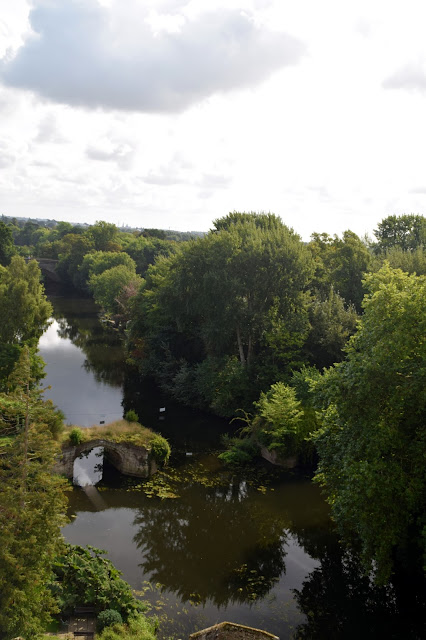The town of Warwick was founded on the banks of the River Avon in 914
AD by Ethelfleda, sister of Edward the Elder, as a defence against the
Danish invaders, on a site overlooking earlier riverside settlements. It
is built on a small hill which controlled not only the river valley but
also the river crossing on the road to London and the roads to
Stratford, Coventry and the salt way to Droitwich. The Anglo-Saxon town
was surrounded partly by a wall and partly by a ditch.
The mediaeval core of the town was prevented from expansion by the
open spaces that surround it: the Common and Racecourse, the grounds of
the Priory, St Nicholas Meadow, the River Avon, and later, Warwick
Castle. Within a relatively small area there are many buildings of
historic interest, of which the Castle is the most important.
This is one of the most dramatic and complete mediaeval castles in
the country. It has been inhabited continuously since the Middle Ages,
and was the home of the Earls of Warwick until recently.
Many of the central streets of the town were destroyed by the Great
Fire of 1694. The buildings which were burnt, and many which were not,
were re-built in the handsome style of the late 17th and early 18th
centuries. St Mary’s Church, which dominates the surrounding
countryside, had a new nave and tower at the same time.
 |
| The East Gate, one of the only two remaining gates, has seen many changes since it was first part of the defensive system of the town. |
 |
| In 1571 Robert Dudley, Earl of Leicester (Leycester), founded a home for those wounded in the service of the Queen, and her successors, and this use continues to the present day. |
 |
| Lord Leycester Hospital |





















No comments:
Post a Comment